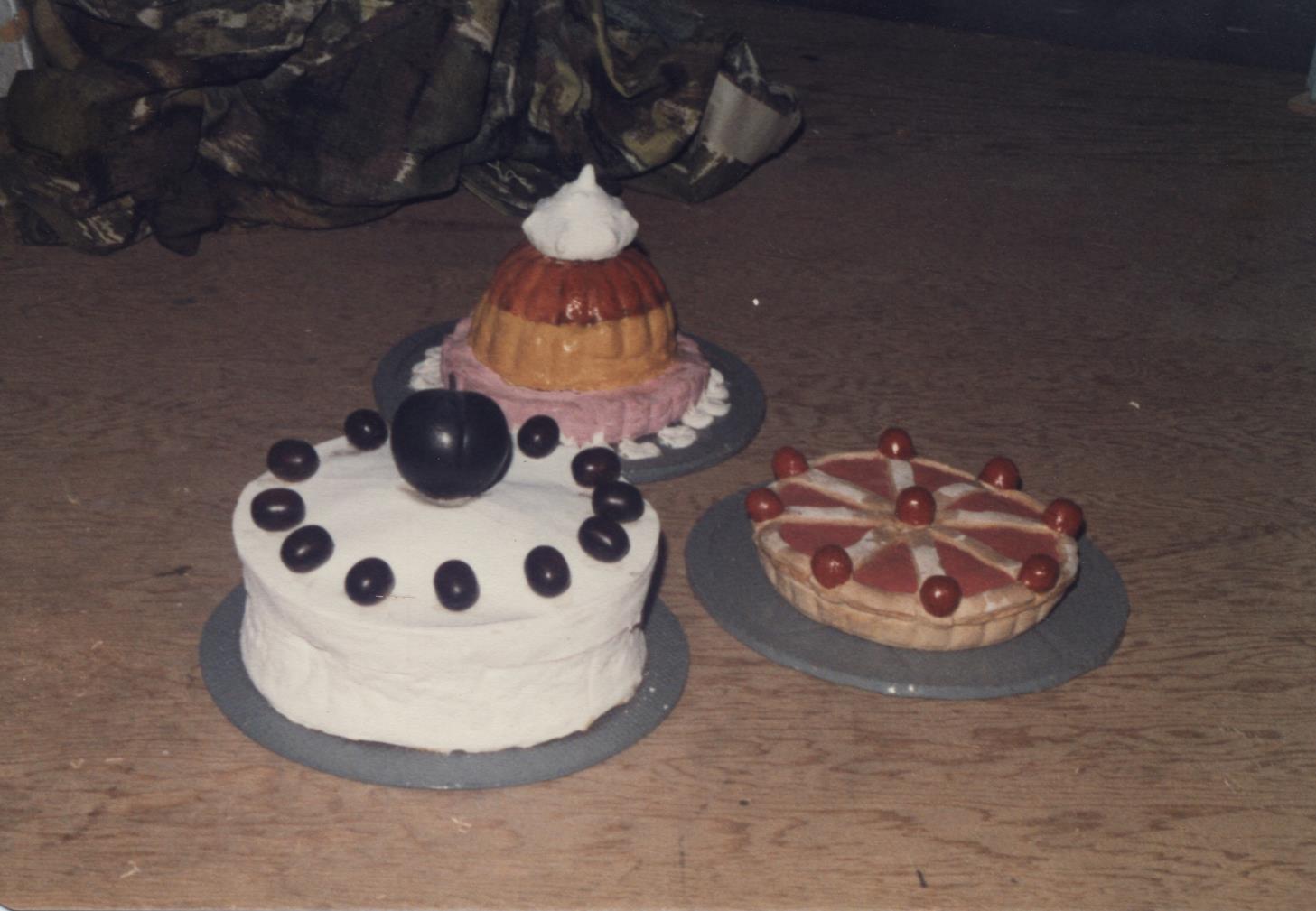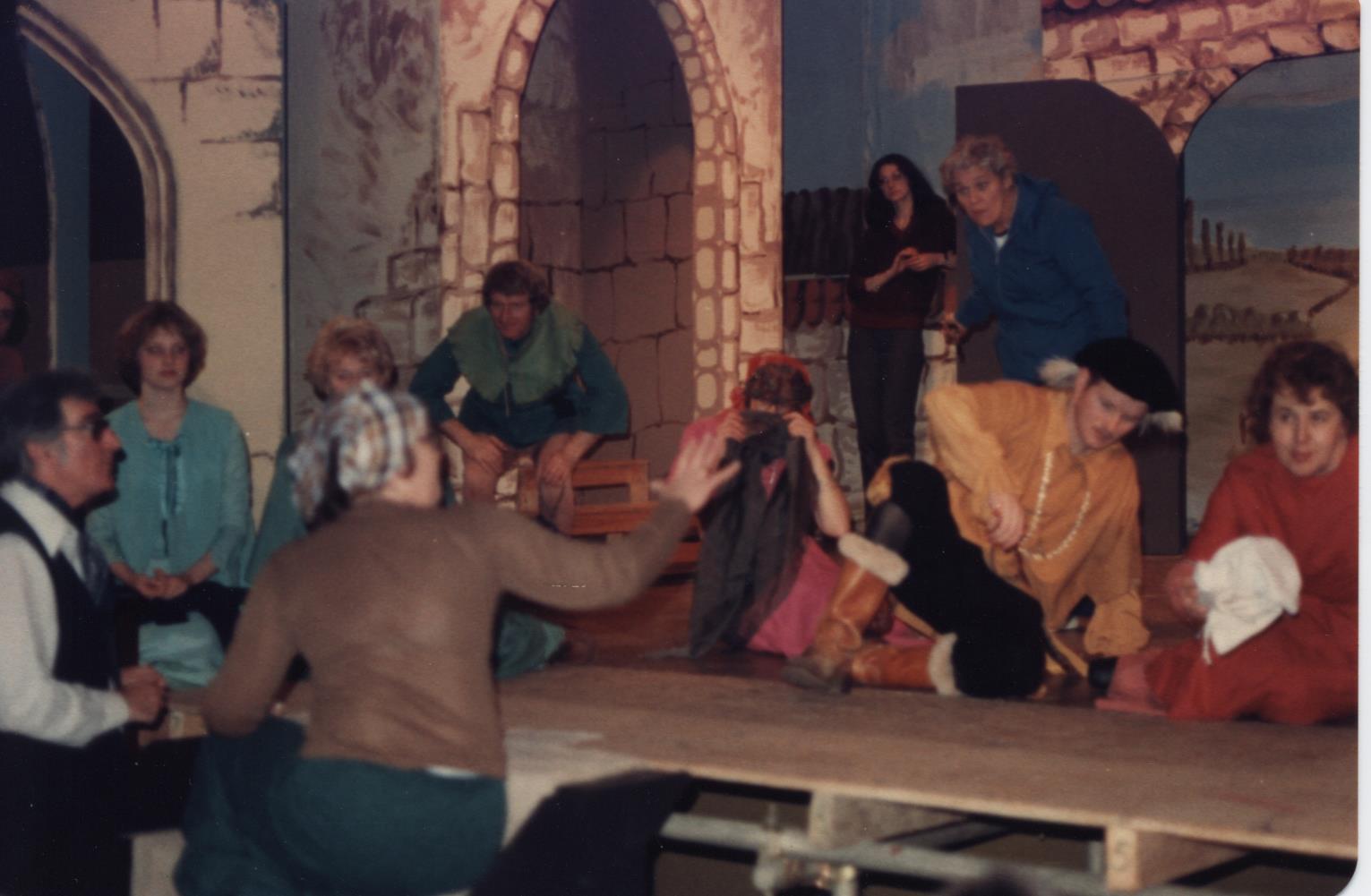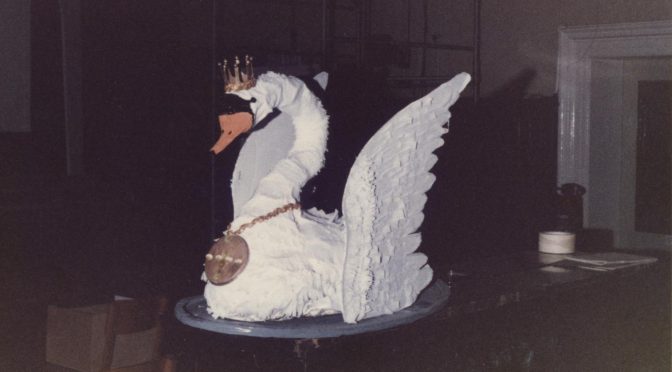Okay, I lied – there are going to be three blogs on the Green Children. That’s how much I love this tale. This one, however, is a more personal take, going back to my earliest memories of Suffolk’s stories. As a tiny child my mythology was personal, concerning only the village, Layham, where I lived – with terrors like the bridge over the Brett by the mill which had gaping holes that would, I was sure, suck me down; like the fascinating fungus in the dead elm spinney next to the house. I had no idea that the rectory where I once got terrifyingly lost at a garden party was where poor Maria Marten had her first and only job, or that Black Shuck lurked on the lanes into Hadleigh – but that was soon to change.

Back in 1979, when I was six or seven my Mum started making really exciting things. Mum was props mistress at the local amateur dramatic society, Hadleigh Amateur Dramatic Society (HADS), and I became used to her making all sorts of strange things – I particularly remember the box of fake gems that I loved to run by fingers through and dream… Some of the furniture she acquired actually stayed in the house, I think! This time, it was a huge, huge prop. It was a swan – to be the centrepiece of a medieval feast – and I was fascinated. Mum says of it, ‘I know I used a bird book to work from. It must have taken a while, though, to build up all the stages. It was a wire netting base then papier maché then possibly crepe or tissue paper.’ It was, as you see, a thing of beauty!

There were also tempting puddings – almost edible, they were: Mum didn’t have any clay so she simply made the puddings from pastry, which she then painted and adorned with plastic fruit. Having been a props mistress myself, I know they often have long, long lives – not so these. She says, ‘eventually they just disintegrated in the props cupboard…’
 But what were they for? I knew it was a play, of course, but I was intrigued by the title, ‘The Green Children’. Who – or what – were these children, and why were they green? I was too young to go to the play and find out for myself, but Mum must have told me the story. It was one of my first encounters with the county’s folklore, and I loved it, even though it was a sad tale. It stayed with me ever since, helping develop a fascination with fairy lore and the Otherworld that lasts to this day. The sad fate of the green boy particularly affected me – and still does, I confess. As a child who was uprooted from my home several times, I admire the green girl for getting on with it, knuckling down and fitting in, but I was like the green boy, lonely and pining for a time and place where I was comfortable…
But what were they for? I knew it was a play, of course, but I was intrigued by the title, ‘The Green Children’. Who – or what – were these children, and why were they green? I was too young to go to the play and find out for myself, but Mum must have told me the story. It was one of my first encounters with the county’s folklore, and I loved it, even though it was a sad tale. It stayed with me ever since, helping develop a fascination with fairy lore and the Otherworld that lasts to this day. The sad fate of the green boy particularly affected me – and still does, I confess. As a child who was uprooted from my home several times, I admire the green girl for getting on with it, knuckling down and fitting in, but I was like the green boy, lonely and pining for a time and place where I was comfortable…

The play was written by a couple who lived a couple miles north of Hadleigh in Whatfield, Mona Bruce and Robert James. The Internet Movie Database describes James as ‘a prolific “I know the face, but” performer of intelligence, authority and a distinctive countenance’, whose finest moment may have been as a ‘conscience-stricken scientist’ in the 1966 Doctor Who episode, ‘The Power of the Daleks’![i] His wife was a writer and actress, ‘known for Within These Walls (1974), To Sir, with Love (1967) and Agatha Christie’s Miss Marple: 4.50 from Paddington (1987).’[ii] They became heavily involved in HADS – James was the Chairman, and also in the Whatfield Amateur Dramatic Society.

They wrote the play – actually a musical – in 1972, and it was revived in 1979, the production my Mum was involved in. Here’s what they have to say about it – it sounds as if we ought to have known the play better, if only for the tickly question of money! Let’s revive it, now! It was a humorous take on the story, full, says a local newspaper, ‘of funny Suffolkisms’ such as ‘“They must have been foreign,” said a startled villager. “’Appen they come from Essex,” came the reply.’[iii]



Fortunately, Mum has a few pictures from the production, which, in 1979, stared Allyson White as the green girl, and Stephen Hicks as the green boy. Captions my Mum’s. You can even see my Mum, looking willowy and Pre-Raphaelite in the background of the rehearsal one…
She – and I – wonder what happened to the swan…
Notes:
[i] http://www.imdb.com/name/nm0416877/bio?ref_=nm_ov_bio_sm
[ii] http://www.imdb.com/name/nm0115551/bio?ref_=nm_ov_bio_sm
[iii] Newspaper clipping ‘Musical Shows Off Group’s Talents’ (3 December 1979), private collection
Images:
All images © Cherry Wilkinson



